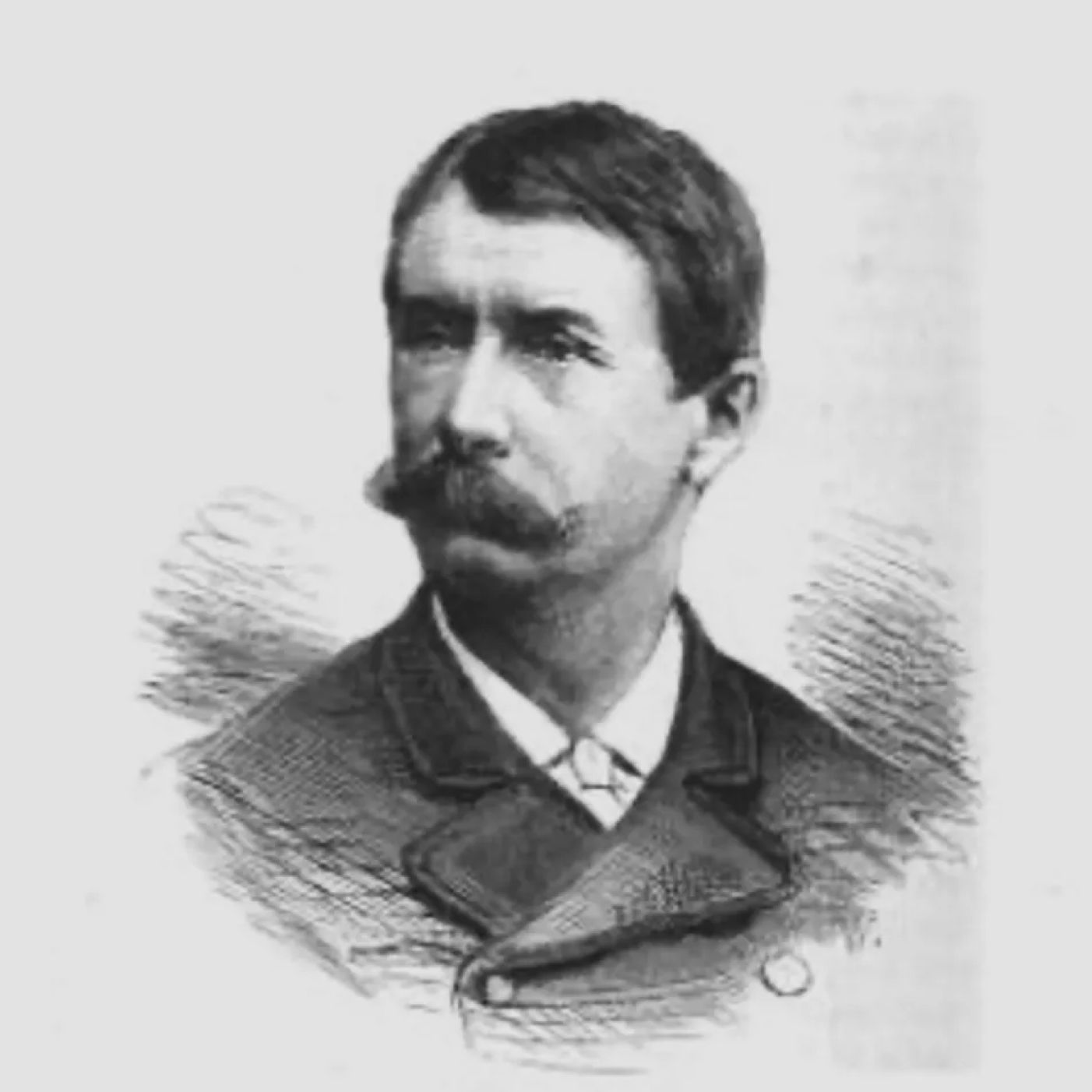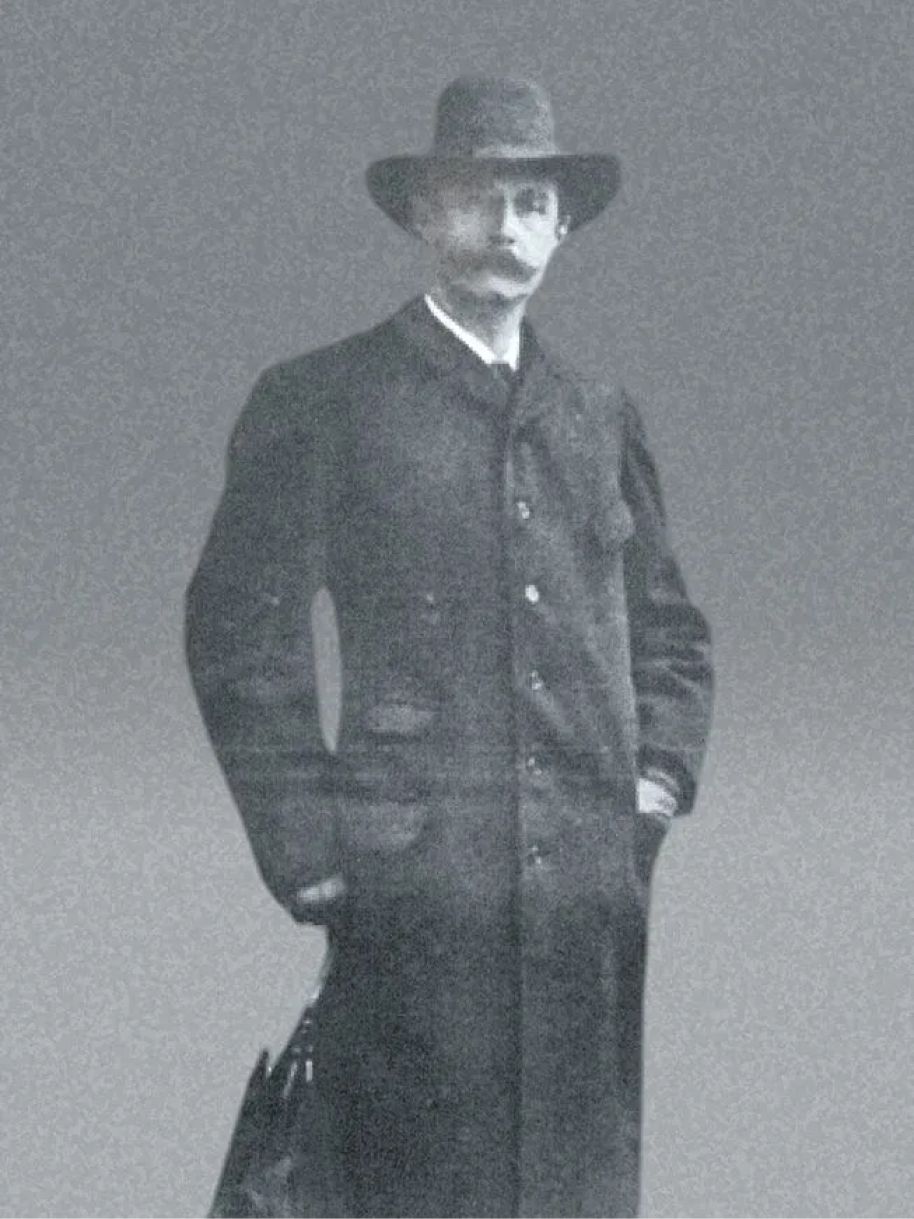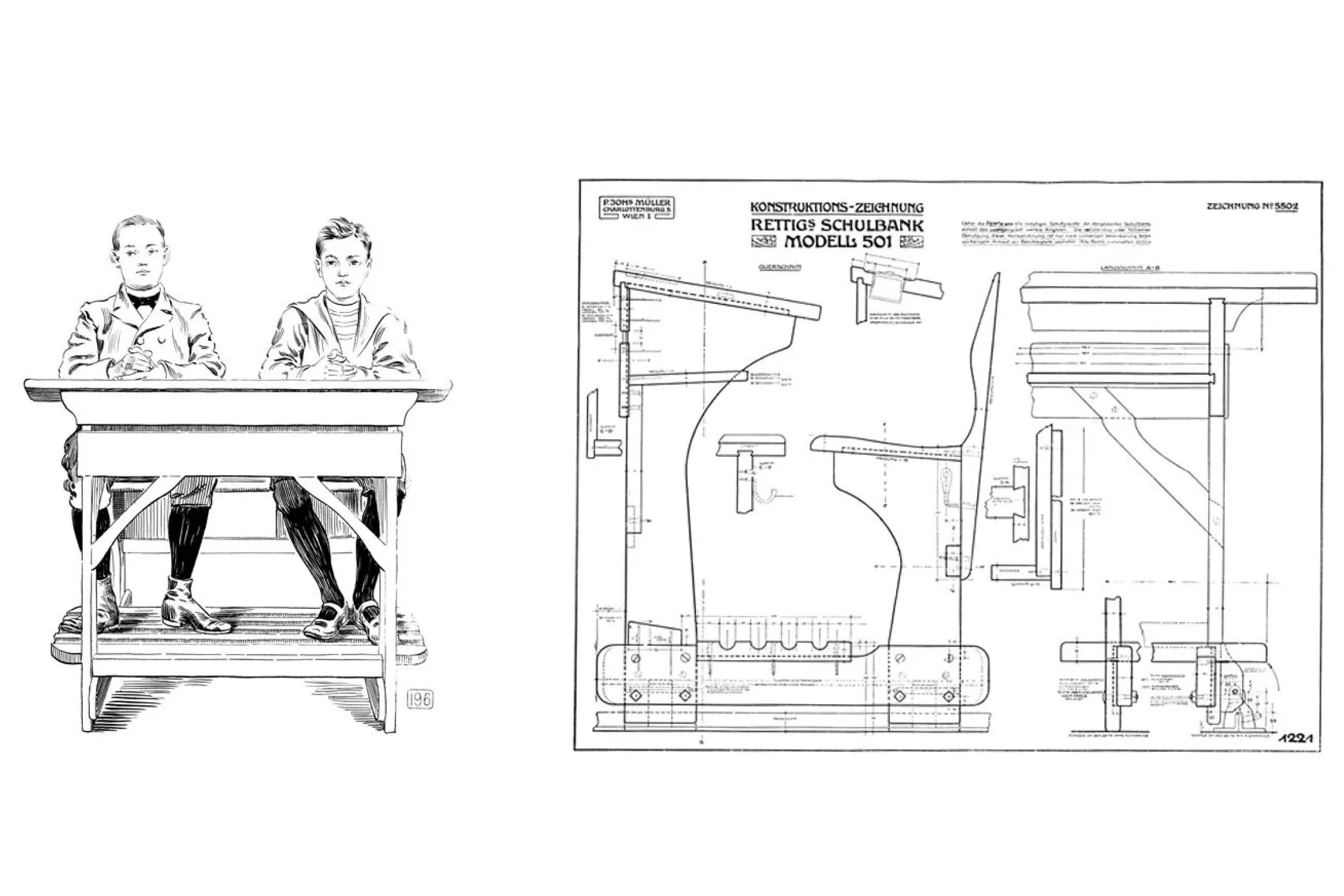Wilhelm Rettig
Our first designer

Our first designer
Introducing our first design partner: Wilhelm Rettig. The German architect designed our first piece of furniture before we were founded in 1895 - the "Rettig bench". This type of school bench is one of the most successful in German classrooms. Learn more about the pioneer Wilhelm Rettig and his impressive career.

The architect was born in Heidelberg in 1845 and studied in Karlsruhe from 1861 to 1865. After his studies, he went to Paris in 1867 on an official assignment, and then returned to his hometown to carry out several buildings until 1871. After a short stay in France, Wilhelm Rettig spent the next few years traveling all over Germany. There he was responsible for the planning and design of many architectural works.
Although Wilhelm Rettig was always drawn to Berlin, there was another city that played an important role in his life: Munich. Here he gave important impulses to which we owe the cityscape of Munich that we all know. But some of his ideas were too controversial. The Munich city council was therefore happy to say goodbye to Wilhelm Rettig after his contract ended and he returned to Berlin. He lived there until his last breath and died on August 2, 1920 at the age of 75.


After 1871 Wilhelm Rettig Was Responsible for the Planning & Design of Many Architectural Works in Germany
What is Wilhelm Rettig known for?
Wilhelm Rettig not only designed buildings, but was also responsible for construction management. At the end of the 19th century, several remarkable buildings were built under his watchful eye, although unfortunately not all of them survived the world wars. Wilhelm Rettig also distinguished himself as a town planner and inventor, although not all of his contemporaries celebrated his innovations.
Heavenly Neo-GothicThe Garrison Church in Metz was built over a period of six years and became the pride of a Franco-German city. The church survived the war, but the building burned down in 1946. Today, the preserved bell tower testifies to the majestic splendor under Wilhelm Rettig's leadership.
Dynamic InventionA moving track that city dwellers can jump onto while walking? Revolutionary! The platforms, arranged like steps, move at different speeds, allowing passers-by to climb up the first and slowest step. Test systems of the step track, which he designed together with his brother Heinrich, were shown at the World Exhibitions in Chicago (1893) and Paris (1900).
Baroque in Hunger StyleWilhelm Rettig's designs for the market hall on Antonplatz attracted many critics. The unadorned facade gave rise to the term "hunger style". From today's perspective, we would probably not say anything more about it objectively - after all, there was sculptural decoration and more. But in contrast to the magnificent Baroque, the simple form was shocking at the time. The market hall was badly damaged in World War II, which is why it was finally demolished in 1951.

Share This Page
Found something useful? Share this page via social media or email.